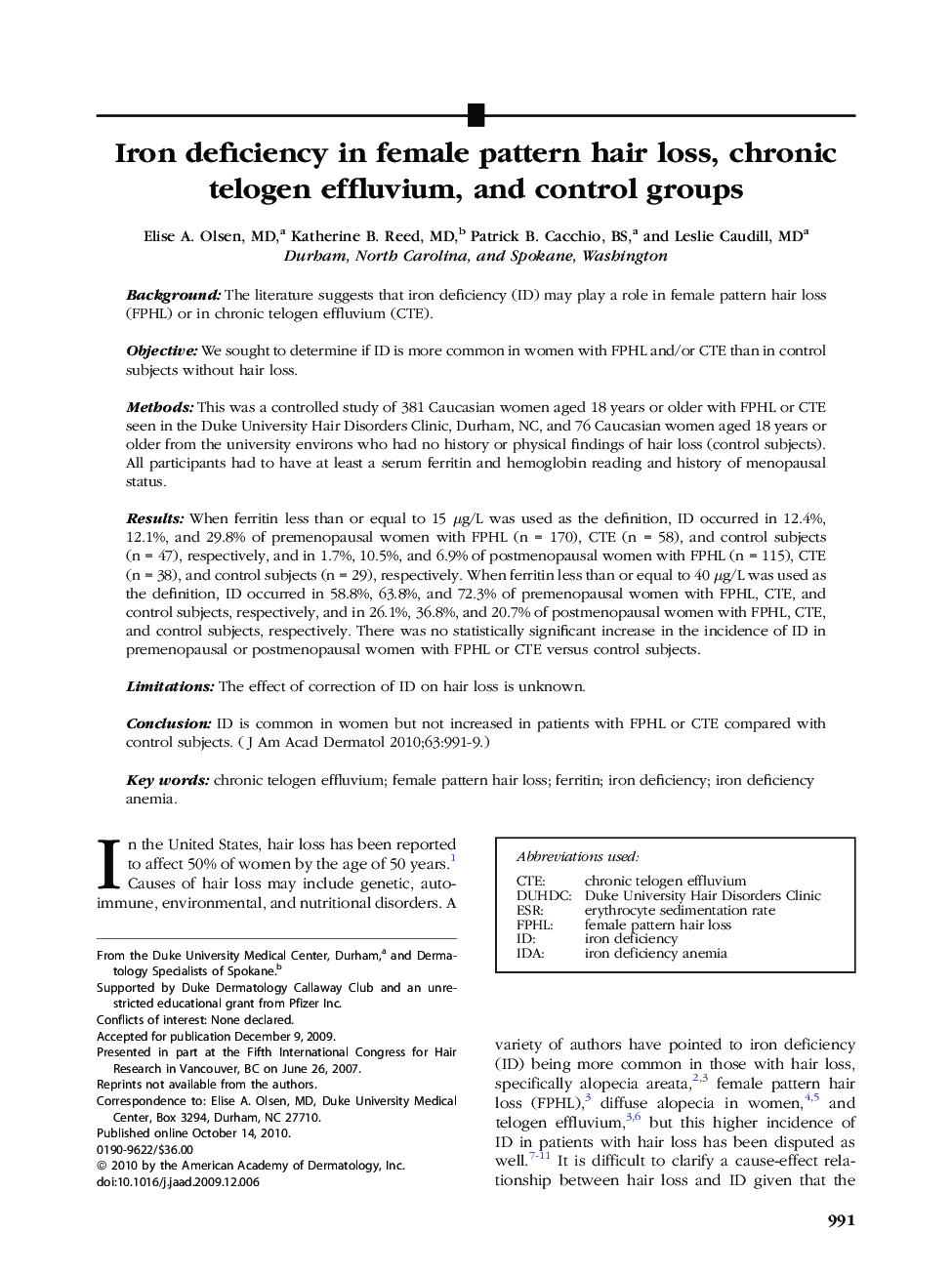| Article ID | Journal | Published Year | Pages | File Type |
|---|---|---|---|---|
| 3206843 | Journal of the American Academy of Dermatology | 2010 | 9 Pages |
BackgroundThe literature suggests that iron deficiency (ID) may play a role in female pattern hair loss (FPHL) or in chronic telogen effluvium (CTE).ObjectiveWe sought to determine if ID is more common in women with FPHL and/or CTE than in control subjects without hair loss.MethodsThis was a controlled study of 381 Caucasian women aged 18 years or older with FPHL or CTE seen in the Duke University Hair Disorders Clinic, Durham, NC, and 76 Caucasian women aged 18 years or older from the university environs who had no history or physical findings of hair loss (control subjects). All participants had to have at least a serum ferritin and hemoglobin reading and history of menopausal status.ResultsWhen ferritin less than or equal to 15 μg/L was used as the definition, ID occurred in 12.4%, 12.1%, and 29.8% of premenopausal women with FPHL (n = 170), CTE (n = 58), and control subjects (n = 47), respectively, and in 1.7%, 10.5%, and 6.9% of postmenopausal women with FPHL (n = 115), CTE (n = 38), and control subjects (n = 29), respectively. When ferritin less than or equal to 40 μg/L was used as the definition, ID occurred in 58.8%, 63.8%, and 72.3% of premenopausal women with FPHL, CTE, and control subjects, respectively, and in 26.1%, 36.8%, and 20.7% of postmenopausal women with FPHL, CTE, and control subjects, respectively. There was no statistically significant increase in the incidence of ID in premenopausal or postmenopausal women with FPHL or CTE versus control subjects.LimitationsThe effect of correction of ID on hair loss is unknown.ConclusionID is common in women but not increased in patients with FPHL or CTE compared with control subjects.
